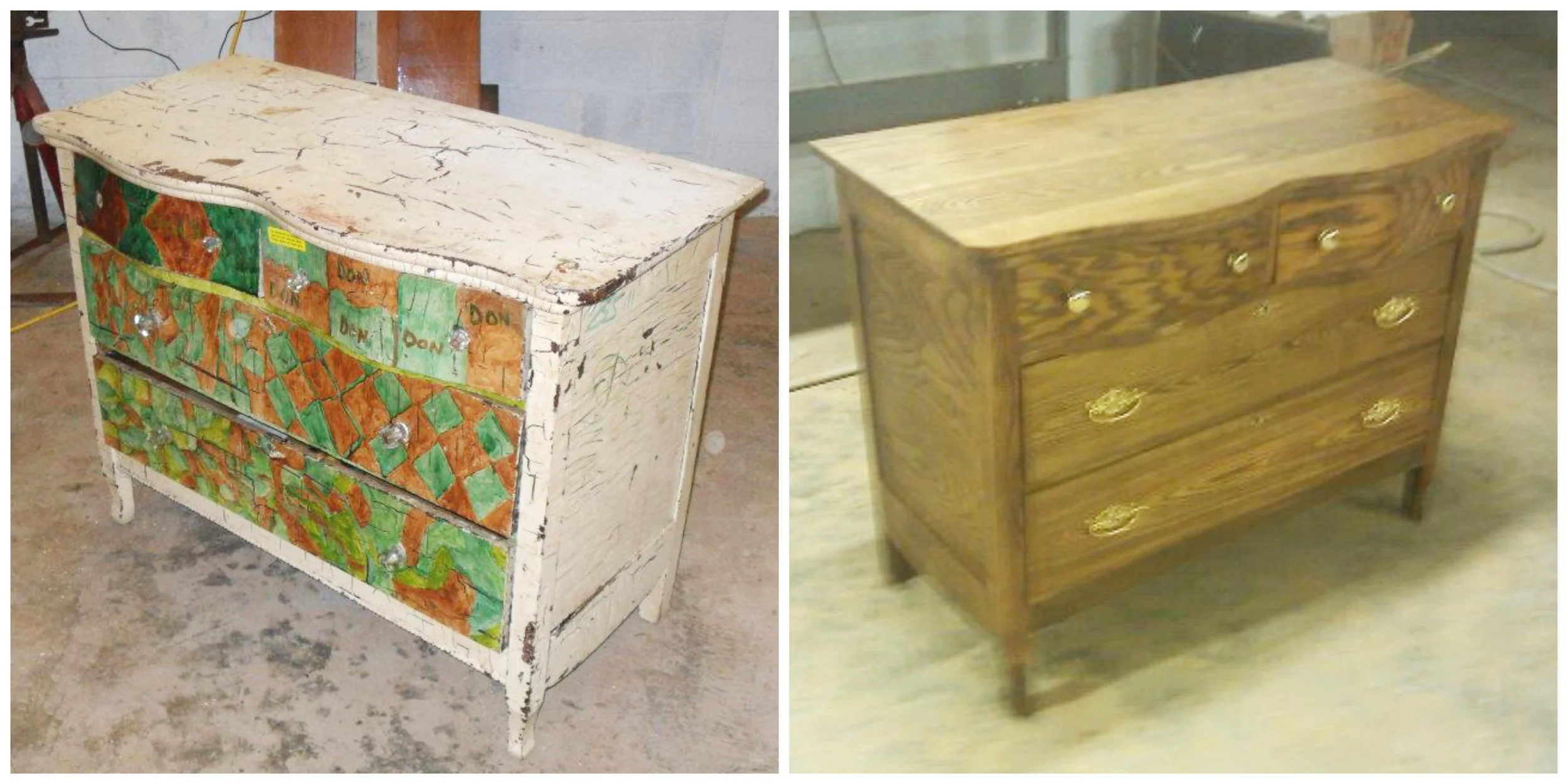Index Surge: Amplifying Your Insights
Stay updated with the latest trends and news across various industries.
Reviving Relics: Breathing New Life into Old Furniture
Transform your space! Discover creative ways to revive old furniture and turn forgotten relics into stunning focal points.
10 Creative Ways to Upcycle Your Old Furniture
Upcycling your old furniture is a fantastic way to not only breathe new life into your home but also to make a positive impact on the environment. Here are 10 creative ways to upcycle your old furniture:
- Transform a dresser into a TV stand: Sand down the surface, apply a fresh coat of paint, and rearrange the drawers for optimal cable management.
- Create a garden bench: Use an old headboard as the backrest and secure it to a sturdy seat made from reclaimed wood.
- Make a coffee table from an old door: Attach legs to an old door for a rustic coffee table that stands out.
- Turn a wooden crate into a side table: Stack crates, add a tabletop, and voilà—a stylish side table!
- Revamp your chairs: Reupholster old dining chairs with bold fabric for a modern look.
- Use a bookshelf as room divider: Position a bookshelf horizontally to create a unique and functional space separator.
- Craft a headboard from shutters: Attach repurposed shutters to the wall for a charming headboard.
- Make a shoe rack from a ladder: Lean a vintage ladder against the wall and use it to store shoes stylishly.
- Coat rack from an old door knob: Attach door knobs to a wooden board for a quirky coat rack.
- Develop a pet bed: Repurpose an old nightstand by removing the drawer and adding a cozy cushion inside for your furry friend.

The Ultimate Guide to Refinishing Antique Pieces
Refinishing antique pieces can be a rewarding experience, bringing new life to cherished items while preserving their historical value. To start, understanding the type of finish on the piece is crucial. Antique items often have layers of varnish or shellac that require specialized techniques to remove without damaging the wood beneath. Use a gentle stripper designed for antiques and follow up with a soft, fine-grit sandpaper to reveal the original wood grain. Always test your method on a hidden area first to ensure compatibility with the surface.
Once you have successfully stripped and prepared your antique piece, it’s time to apply a fresh finish. Consider natural oil finishes, such as tung or linseed oil, which enhance the wood's beauty without overpowering its natural characteristics. Apply the oil with a soft cloth in the direction of the grain, allowing it to penetrate the wood for several minutes before wiping off any excess. For a glossy appearance, you might want to follow this with a coat of wax or a light varnish. Remember, patience is key to achieving a beautiful, long-lasting finish.
How to Choose the Right Paint for Reviving Vintage Furniture
Reviving vintage furniture can be a rewarding project, and one of the most critical decisions you'll face is choosing the right paint. It’s essential to consider the type of material your furniture is made from. For wooden pieces, using a chalk paint or a milk paint can provide a beautiful matte finish, while still allowing the natural grain to show through. If your furniture has been previously lacquered or painted, you might want to opt for a paint primer to ensure proper adhesion and a longer-lasting finish. Always test the paint on a small, inconspicuous area to see how it interacts with the surface before committing to the entire piece.
In addition to the paint type, color selection is crucial for achieving the right aesthetic for your vintage furniture. Consider the overall style and ambiance of the room where the piece will reside. Opt for vintage-inspired colors such as soft pastels, muted earth tones, or even bold jewel tones to enhance your furniture’s retro character. Moreover, don't forget to finish the job with a protective top coat, such as a clear wax or polyurethane, to safeguard your furniture from wear and tear, ensuring your revitalized piece not only looks great but also stands the test of time.